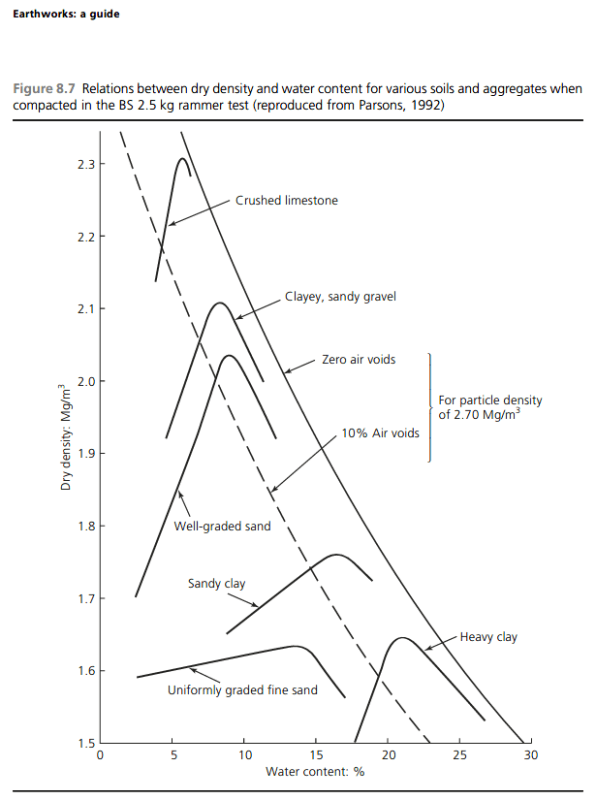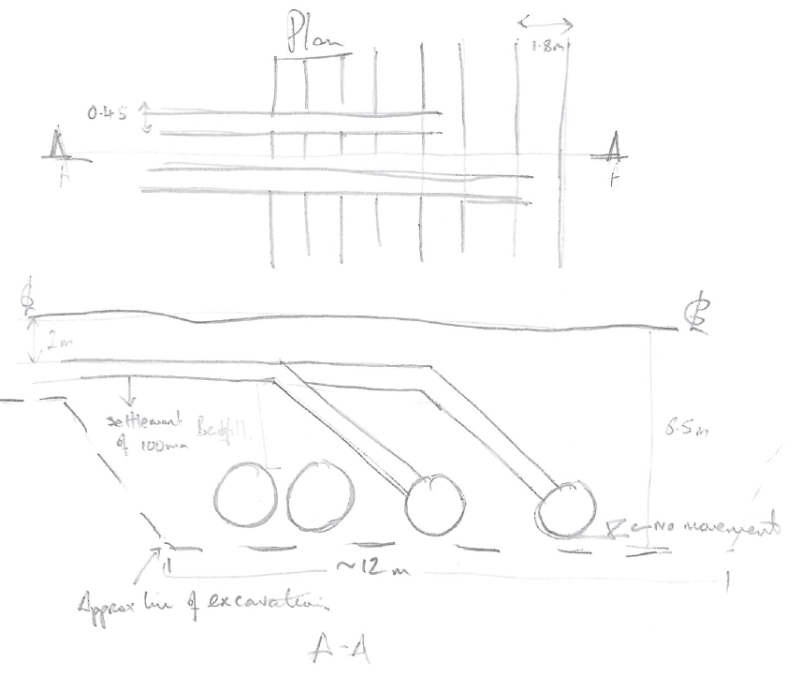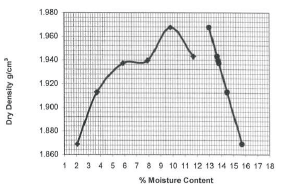Hi all,
I am working on a project where there is a debate as to how the material was QA/QC'd to 90% compaction (standard proctor), however after settlement of some infrastructural, the compaction level is ~80%. The material is well graded sand with trace fine gravel.
One theory being floated around is that the material has a very bell shaped OMC/MDD curve. Someone has proposed that the material was compacted to 90% however as there were rainfall events / drying events, the moisture content has changed. As the moisture content changes, the density also changes. Refer to below sketch, we have an OMC/MDD line similar to line 1 which is sensitive to changes in MC.

I dont buy it to be honest. I argued that the purpose to the OMC/MDD curve is on moisture content during construction, ideally you are at OMC +/-2% (or whatever your spec says), if you are too wet or too dry you will likely find it difficult to achieve 90%MDD.
Infrastructure is supported on granular material and doesn't routinely settle due to changes in MC, does it?! Yes if there is changes to water level as a reduction in groundwater level can increase in effictive stress in soil causing additional settlement, but not if the moisture content changes from 14% to 8% after placement?
I am working on a project where there is a debate as to how the material was QA/QC'd to 90% compaction (standard proctor), however after settlement of some infrastructural, the compaction level is ~80%. The material is well graded sand with trace fine gravel.
One theory being floated around is that the material has a very bell shaped OMC/MDD curve. Someone has proposed that the material was compacted to 90% however as there were rainfall events / drying events, the moisture content has changed. As the moisture content changes, the density also changes. Refer to below sketch, we have an OMC/MDD line similar to line 1 which is sensitive to changes in MC.

I dont buy it to be honest. I argued that the purpose to the OMC/MDD curve is on moisture content during construction, ideally you are at OMC +/-2% (or whatever your spec says), if you are too wet or too dry you will likely find it difficult to achieve 90%MDD.
Infrastructure is supported on granular material and doesn't routinely settle due to changes in MC, does it?! Yes if there is changes to water level as a reduction in groundwater level can increase in effictive stress in soil causing additional settlement, but not if the moisture content changes from 14% to 8% after placement?



